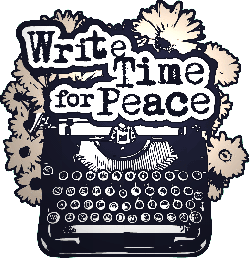 Most of us would probably agree that our work for peace springs from some place within ourselves, some crevice in our souls, some deep corner of our hearts, that recognizes injustice and harbors an insistent desire to set things right. Most of us feel deeply and are graced with a passion for peace that makes this work both heartbreaking and joyful.
Most of us would probably agree that our work for peace springs from some place within ourselves, some crevice in our souls, some deep corner of our hearts, that recognizes injustice and harbors an insistent desire to set things right. Most of us feel deeply and are graced with a passion for peace that makes this work both heartbreaking and joyful.
At the same time, I think that most of us engage our hands in this struggle, our physical selves in this work, at times almost unconsciously. Our feet find their way to the streets, our hands carry signs, roll away rocks, and embrace the other, our wrists know the pinch of handcuffs, our shoulders adjust to heavy backpacks.
As a way of centering, many of us wield paint brushes, knit scarves, and plant cucumbers. Our hands, like our hearts, seem to throw themselves into this work with abandon, almost as a matter of course.
While the world needs all the heart and physical effort we can muster, it also needs us to use our heads in this work. I know that this is probably the teacher in me making this plea, but I fear that our hard work sometimes suffers from a lack of scholarship that dilutes our efforts to reach out to more people.
While it is important to place our feet in the street, it seems it is equally important to plant our butts in the study. How much better our work is when we know the geography, the history, the literature of the places where we serve on peace teams.
Without wanting to sound elitist, I think it is fair to say that most people in the peace and justice community are better informed and more widely read than many of our fellow citizens. It is our understanding of history and current events, after all, that compels many of us to speak out and get involved.
That said, we need to delve more deeply into the scholarship that informs our work and continue to study the complexities and nuances of the issues and places that we are committed to. To become scholar-activists who use our heads as well as our hearts and hands.
In our world of Orwellian doublespeak, euphemism, and spin, language itself has been compromised to the extent that truth is obscured and people are easily manipulated. If our scholarship results in nothing more than a restoration of clear speech it will have accomplished a great deal for peace.
When our research allows us to show that violence dismissed as mere collateral damage is, in fact, the killing of a particular family with particular names living in a particular village, we are helping to humanize the world by exposing the chilling abuse of language.
Far from elitism, this kind of scholarship helps pull us away from abstraction and the technical jargon so typical of the military-industrial-educational complex and back into the world of the concrete, the blessed world of flesh-and-blood people with names and stories.
While our scholarship can help us cut through the obfuscation and spin by simply calling things by their rightful names, it can also give us the tools we need to make better presentations when we are called upon to speak.
The ability to read maps, recall basic history, and offer the insights of scholars in the field related to our topic go a long way in helping us better communicate the urgency of peacemaking and in avoiding presentations that are superficial or sentimental.
In fact, I would argue that keeping up on reading via books, Internet, journals, magazines, and films is as integral a part of serving on a peace team as nonviolence training.
Otherwise, our work becomes stunted and fails to bear the full fruit of our commitment to peace. While, of course, our primary work is third-party nonviolent intervention in places of conflict, there is another side to the work that entails study and public sharing.
Our international team members are often told by their hosts, “We are so grateful for what you do here, but your most important work is going home and sharing what you’ve seen here.”
While the personal stories we share are central, how much better it is when we can buttress those stories with empirical data, historical facts, maps, and scholarly analysis from a variety of sources.
Another area of study that is too often overlooked in peacemaking is the study of art, literature, culture, and language. Historically, poets, artists, and musicians have been the visionaries of peace and justice – the keepers of hope, the light in the distance that draws us to a different place. The ones who keep movements humane and flexible.
Our work is enriched when we know the poems, the paintings, the voices of those with whom we stand in solidarity. By knowing the words and phrases with which others cry, celebrate, and pray, we enter the holy place where we become more than our small selves.
Life is all about balance, and as peacemakers it is probably good practice to reflect on the balance of heart, hands, and head in our work.
Peacemaking without heart becomes sterile and bitter. Without hands it becomes theoretical and abstract. Without the head it becomes truncated, undisciplined, and so much less than it could be.
My hope is that we commit ourselves to intellectual growth in our work for peace and that we embrace scholarship as an integral part of the work.
Michigan Peace Team Summer 2010 Newsletter

